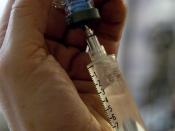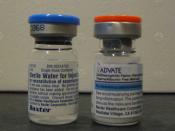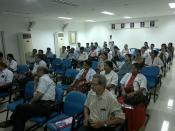Hemophilia is a rare genetic bleeding disorder in which the blood does not clot normally. Persons with hemophilia may bleed for a longer time than others after an injury or accident. They also may bleed internally, especially in the joints (knees, ankles, and elbows). Coagulation, or clotting, is the body's mechanism to halt bleeding. It involves at least 14 sequential steps, each requiring a specific plasma protein or factor normally found in the blood. In hemophilia, one of the factors required for the clotting sequence is deficient or absent. Therefore, people with hemophilia will bleed for a longer time compared to others. Hemophilia is the oldest known hereditary disorder that primarily affects males.
Two of the most common forms of hemophilia are A and B. In persons with hemophilia A (also called classic hemophilia), clotting factor VIII is not present in sufficient amounts or is absent. Hemophilia A is the most common severe bleeding disorder and approximately 1 in 8,000 males are affected.
Hemophilia A leads to a severely increased risk of bleeding from common injuries. Common sites of bleeding are joints, muscles, brain & digestive tract. In people with hemophilia B (also called Christmas disease), clotting factor IX is not present in sufficient amounts or is absent. Hemophilia B is less common that hemophilia A and occurs in about 1 in 35,000 males. Patients with severe hemophilia can bleed in response to relatively mild trauma and will bleed spontaneously. People with hemophilia do not bleed more or faster than normal, but they bleed for a longer period of time. Most people are born with hemophilia and have a family history of it too.
The symptoms of this disorder are lengthy bleeding after circumcision, excessive bruising, swollen or painful joints, swollen or tender muscles, excessive bleeding from the gums, tongue,


